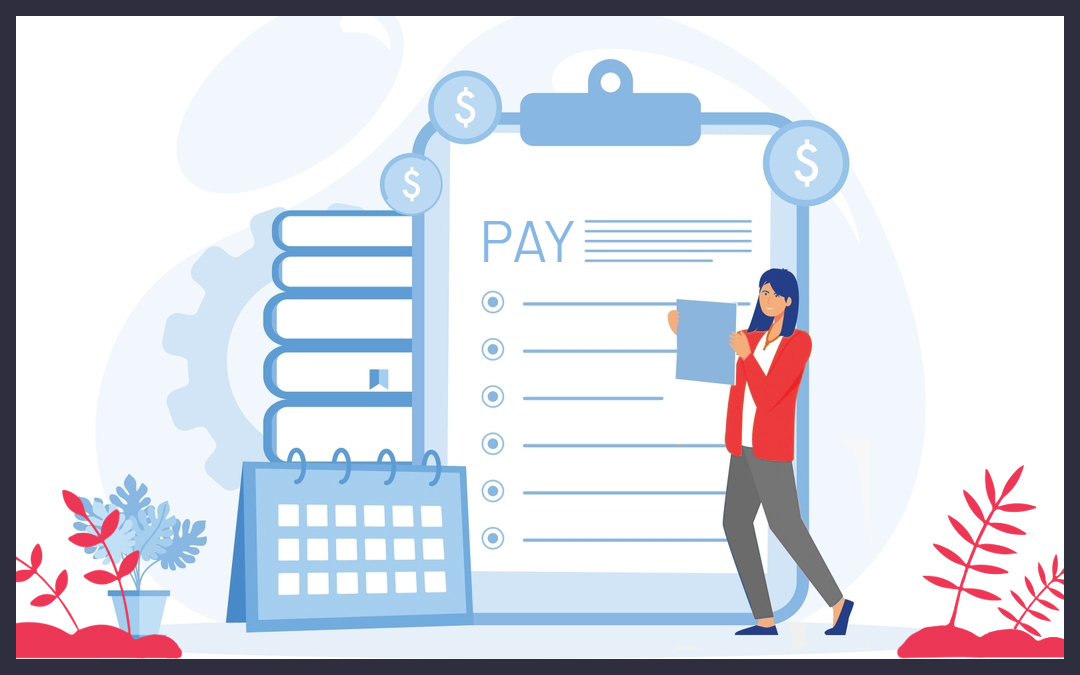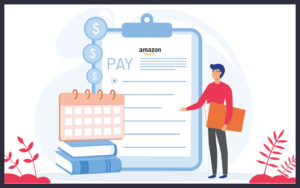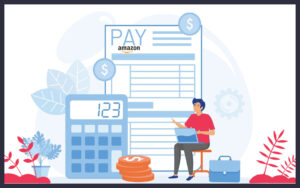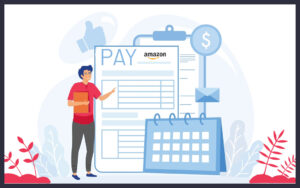Are you ready to dive into the world of Amazon selling? Get ready for an adventure like no other!
In the 2023 Amazon Seller’s Guide, we’ll show you how to navigate through the treacherous waters of Amazon seller fees and the cost of selling on Amazon FBA.
Don’t worry, we’ve got your back! With our expert tips and tricks, you’ll be optimizing your seller account like a pro in no time.
So, grab your virtual compass and let’s get started!
Importance of Understanding Amazon Seller Fees
To fully maximize your profits as an Amazon seller, it is essential that you have a thorough understanding of Amazon seller fees. These fees are charged by Amazon for various services and can significantly impact your overall profitability. Let’s take a closer look at some of the key fees you need to be aware of:
| Fee Type | Description |
| FBA Fee | This fee is charged for using Amazon’s fulfillment services, including storage, packing, and shipping of your products. |
| Closing Fee | Amazon charges a closing fee for each item sold, which is a fixed amount based on the category of the product. |
| Service Fee | As an individual seller, you may be required to pay a monthly service fee in addition to the other fees. |
| Minimum Referral Fee | Amazon sets a minimum referral fee for certain categories, ensuring that you pay a minimum amount for each item sold. |
Amazon Seller Fees Explained
Now let’s take a closer look at Amazon Seller Fees and how they can impact your profit margin. Understanding the breakdown of various fees is essential for managing your costs effectively.
Additionally, it’s important to stay informed about any changes in Amazon Seller Fees, especially as we approach 2023.
Breakdown of Various Amazon Selling Fees
Now let’s talk about the breakdown of various Amazon selling fees.
As a seller, you’ll need to be aware of the referral fees, FBA fees, and subscription fees that come with selling on Amazon.
Understanding these different costs will help you manage your finances and make informed decisions about your business.
Referral Fees
When selling on Amazon, you’ll need to be aware of referral fees, which are a type of Amazon seller fee that you’ll be responsible for paying. These fees are a commission fee that Amazon charges for each item sold.
Amazon offers two types of referral fees: a percentage of the item’s sale price or a fixed fee per item. These referral fees are part of the overall fees associated with selling on Amazon and are an important factor to consider when calculating your profits.
FBA Fees
To understand the cost of selling on Amazon FBA, you need to be aware of the various FBA fees that you’ll incur as a seller. These fees include referral fees, storage fees, and fulfillment fees. The FBA calculator can help you determine the exact fees based on your selling price and category.
As a professional seller using FBA, you’ll also need to pay a monthly subscription fee. Additionally, there are shipping fees and other fees associated with using FBA per item.
Subscription Fees
You will incur a monthly subscription fee as a professional seller using FBA on Amazon. The amount of the fee depends on the type of selling plan you choose.
The two options are the Professional Selling Plan and the Individual Selling Plan. With the Professional Selling Plan, you pay a monthly fee of $39.99 to access advanced selling features on Amazon Seller Central.
On the other hand, the Individual Selling Plan is free, but you’ll incur additional fees for each item sold.
How Amazon Seller Fees Impact Your Profit Margin?
Understanding the significant impact that Amazon seller fees have on your profit margin is crucial for successfully navigating the world of selling on Amazon FBA. When selling on Amazon, there are various fees that you need to be aware of, as they can eat into your profits. Here is a breakdown of some key Amazon seller fees:
| Fee Type | Description |
| FBA Storage Fees | Fees for storing your inventory in Amazon’s warehouses |
| Long-Term Storage Fee | Additional fee for items stored for more than 365 days |
| Removal Fees | Fees for removing inventory from Amazon’s warehouses |
| Return Processing Fees | Fees for processing customer returns |
These fees can significantly impact your profit margin, especially if you’re not careful. It’s important to factor in these costs when pricing your products and managing your inventory. By understanding and accounting for these fees, you can ensure that your selling on Amazon FBA remains profitable in the long run.
Changes in Amazon Seller Fees for 2023
Navigating the changes in Amazon seller fees for 2023 is crucial for maximizing your profit margin on Amazon FBA. As an Amazon seller, it’s important to stay updated on the cost of selling on the platform to effectively manage your business expenses.
Here are some key changes in Amazon seller fees for 2023:
- Long-term storage fees: Amazon charges long-term storage fees for items that have been stored in their fulfillment centers for more than 365 days. These fees can add up over time and impact your profitability.
- Fees for items in individual seller accounts: If you have an individual seller account, you’ll be charged fees for each item you sell on Amazon. These fees vary depending on the category of the product.
- Changes in fees at Amazon fulfillment centers: Amazon periodically adjusts their fees for services provided at their fulfillment centers. It’s important to stay informed about these changes to accurately calculate your expenses.
The Cost of Selling on Amazon FBA
Now let’s talk about the cost of selling on Amazon FBA.
In this section, we’ll explore the basics of Fulfillment by Amazon (FBA) and how to calculate the true cost of using this service.
Additionally, we’ll share some strategies to help you reduce your expenses and maximize your profits while selling on Amazon FBA.
Introduction to Fulfillment by Amazon (FBA)
Selling on Amazon FBA involves managing the costs associated with using Amazon’s Fulfillment by Amazon service. As an Amazon FBA seller, you need to understand how Amazon charges fees and how these costs can impact your profitability.
Here is an introduction to Fulfillment by Amazon (FBA) and the cost of selling on Amazon FBA:
- Fulfillment by Amazon (FBA) is a service offered by Amazon that allows sellers to store their products in Amazon’s fulfillment centers.
- When a customer places an order, Amazon takes care of packaging, shipping, and customer service.
- This eliminates the need for sellers to handle these tasks themselves, saving time and effort.
- However, Amazon charges fees for using their FBA service, including storage fees and fulfillment fees.
Understanding the cost of selling on Amazon FBA is crucial for successful Amazon FBA sellers. By familiarizing yourself with these fees, you can effectively manage your expenses and optimize your profitability.
Calculating the True Cost of FBA
To accurately determine the expenses associated with selling on Amazon FBA, you need to calculate the true cost of utilizing the FBA service. Selling on Amazon comes with various fees that FBA sellers should be aware of. These fees include referral fees, which are a percentage of the item’s price, and variable closing fees for media products.
In addition to these fees, there are also storage fees for keeping your products in the Amazon warehouse. To access FBA, you’ll need an Amazon seller account and enroll in the FBA program through Amazon Seller Central.
It’s important to calculate the fees you’ll pay for utilizing FBA to ensure that the cost of selling on Amazon FBA aligns with your business goals.
Strategies to Reduce FBA Expenses
One effective way to minimize your expenses when utilizing the FBA service on Amazon is by implementing cost-saving strategies.
Here are some strategies you can use to reduce your Amazon FBA expenses:
– Optimize your product packaging: Consider reducing the size and weight of your packaging to lower shipping costs and avoid oversized fees for items.
– Monitor your inventory levels: Keep a close eye on your inventory to avoid long-term storage fees. Plan your inventory accordingly to ensure you don’t have excess stock sitting in the fulfillment centers for too long.
By implementing these strategies, you can effectively reduce your Amazon FBA fees and overall selling expenses.
Keep in mind that continuously monitoring and optimizing your selling practices is essential to ensure you’re maximizing your profits while minimizing costs.
Optimizing Your Amazon Seller Account
To optimize your Amazon Seller account and offset fees, you can leverage Amazon Advertising to increase visibility and drive more sales.
By improving your product listings for SEO, you can attract more organic traffic and increase your chances of making sales.
Additionally, implementing strategies to maximize your sales, such as bundling products or offering discounts, can help offset the costs associated with selling on Amazon FBA.
Leveraging Amazon Advertising to Offset Fees
You can effectively offset Amazon seller fees by leveraging Amazon Advertising within your seller account. By utilizing Amazon Advertising, you can increase the visibility of your products and drive more sales, helping to offset the fees for items you’re selling on Amazon.
Here are two ways to leverage Amazon Advertising to offset fees:
- Sponsored Products
With Sponsored Products, you can create targeted ad campaigns that appear within search results and on product detail pages. This can increase your product’s visibility and drive more traffic to your listings, ultimately leading to more sales and helping to offset the Amazon charges.
- Sponsored Brands
Sponsored Brands allows you to create custom ads that feature your brand logo, a custom headline, and multiple products. These ads appear at the top of search results, giving your brand increased visibility and driving more traffic to your products, which can help offset the cost of selling on Amazon FBA.
Improving Your Product Listings for SEO
Improving your product listings for SEO involves optimizing your Amazon seller account to increase visibility and drive more traffic to your listings.
By implementing effective SEO strategies, you can improve the chances of your products being found by potential customers on Amazon. This is crucial for maximizing your sales and profitability on the platform.
To start, focus on optimizing your product titles, descriptions, and keywords. Use relevant keywords that are commonly searched for by customers, ensuring that your listings appear in relevant search results.
Additionally, make sure to provide accurate and detailed product information, as this can help boost your rankings.
Regularly monitoring and updating your listings based on customer feedback and market trends can also contribute to better SEO performance.
Strategies to Maximize Your Sales to Offset Fees
By consistently implementing effective strategies, you can maximize your sales on Amazon and offset fees associated with selling on the platform. Here are some strategies to help you optimize your Amazon seller account:
- Optimize your product listings
Make sure your product descriptions are clear, accurate, and compelling. Use relevant keywords to improve your search rankings and attract more customers.
- Price your products competitively
Conduct market research to determine the best price for your products. Keep in mind that Amazon will charge fees based on the selling price, so finding the right balance is crucial.
- Minimize your storage fees
Amazon charges fees per cubic foot for storing your inventory. Manage your inventory effectively to avoid overstocking and paying more in fees.
- Utilize Amazon’s advertising tools
Promote your products through sponsored ads and other advertising features offered by Amazon. This can help increase visibility and drive more sales.
- Offer competitive shipping options
Consider using Amazon’s FBA (Fulfillment by Amazon) service, which allows you to store your inventory in Amazon’s warehouses and have them handle shipping and customer service. This can improve your customer experience and potentially increase sales.
Tools and Resources for Amazon Sellers
Are you looking for ways to streamline your Amazon selling experience?
Well, you’re in luck! In this section, we’ll introduce you to a range of Amazon seller software that can help you manage your business more efficiently.
From AI-powered solutions to analytics tools, these resources will empower you to optimize your operations and navigate the complexities of Amazon seller fees with ease.
Introduction to Amazon Seller Software
To effectively manage your Amazon FBA business, utilize essential tools and resources available to Amazon sellers. When it comes to selling on Amazon, having the right software can make all the difference in streamlining your operations and maximizing your profits.
Here are two sub-lists of key tools and resources you should consider:
Amazon Seller Central
This is your go-to platform for managing your Amazon FBA business. It provides you with a comprehensive dashboard to track your sales, manage your inventory, and analyze your performance.
Amazon Seller Software
There are various software options available to help you automate and optimize your Amazon FBA business. These tools can assist with tasks such as product research, inventory management, pricing optimization, and order fulfillment.
AI-Powered Solutions for Amazon Sellers
If you want to enhance your Amazon FBA business and optimize your operations, utilizing AI-powered solutions is a game-changer.
As an Amazon seller, you’re well aware of the amazon seller fees and the cost of selling on Amazon FBA. However, with the help of AI-powered tools and resources, you can streamline your business on Amazon and maximize your profits.
The Amazon Seller Central dashboard provides valuable insights into your sales, inventory, and customer data. AI-powered solutions can analyze this data to provide you with actionable insights and recommendations. They can help you identify the best-selling products on Amazon and optimize your pricing strategies.
Additionally, AI-powered tools can automate various tasks such as inventory management, order fulfillment, and customer support, saving you time and effort.
Take advantage of what Amazon provides and leverage AI-powered solutions to take your Amazon FBA business to new heights.
The Role of Analytics in Fee Management
You can leverage analytics tools and resources to effectively manage fees as an Amazon seller. By using Amazon’s analytics tools, you can gain valuable insights into your sales and fees, allowing you to make informed decisions.
Here are two ways analytics can help you with fee management:
- Sales Analytics
Through sales analytics, you can track your revenue and understand which products are performing well. This information can help you determine the fees you’ll pay for each item and adjust your pricing strategy accordingly.
- FBA Fee Calculators
Amazon also offers fee calculators that help you estimate the fees associated with using Fulfillment by Amazon (FBA). These calculators take into account various factors like item size, weight, and storage duration, giving you a clear idea of the fees you’ll incur when using FBA.
Conclusion
So, now that you have a better understanding of the Amazon seller fees and the cost of selling on Amazon FBA, you can navigate your way to success in 2023.
Remember, knowledge is power, and by optimizing your Amazon seller account and utilizing the right tools and resources, you can thrive in the competitive world of online selling.
So go ahead, seize the opportunity, and watch your business soar to new heights!




